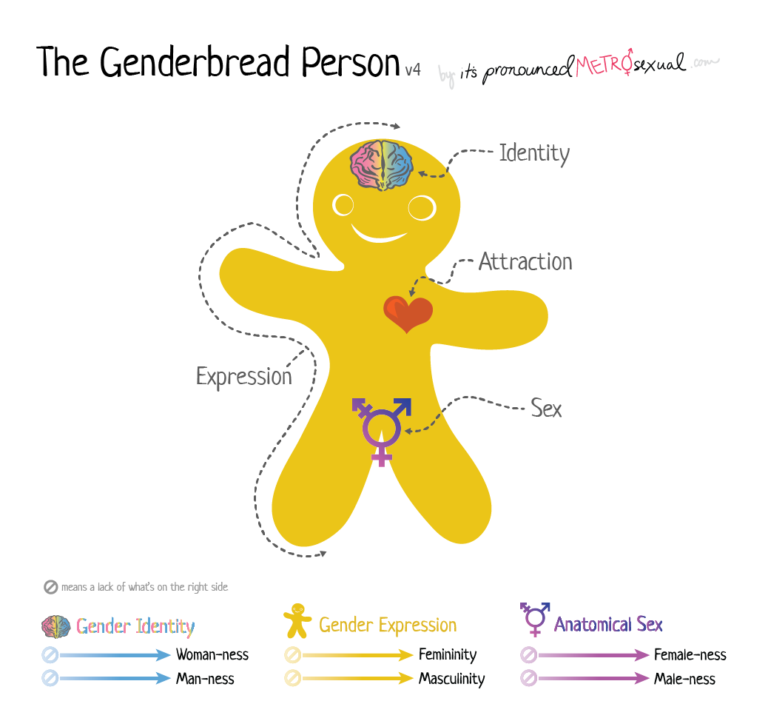Many teachers, parents and friends are unsure about the right language regarding transgender people.
Do you worry about upsetting or offending trans people by using the wrong words? Or, do you avoid the subject because you feel uncertain? If so, read on…
These ten terms help to boost your confidence and our trans language guidance is also available as a Word document for use in your school.
What is Gender?
‘Gender’ is your sense of being a man or woman. The term can also refer to other types of identity that does not fit into the man or woman category.
Trans – Ten Terms
1. Transgender: This umbrella term describes someone who is not the same as (or who is not comfortable with) the sex they were assigned on their birth certificate.
2. Trans: A short version of the word ‘transgender’. Trans and transgender are often used interchangeably.
3. Transman: I was assigned female at birth but now I identify and live as a man.
4. Trans woman: I was assigned male at birth but now I identify and live as a woman.
5. Non-binary: Non-binary people don’t feel male or female. They may:
- Feel like both
- Feel like something inbetween
- Not relate to gender at all
6. Cisgender: This means anyone who isn’t transgender. If you see the word “cis”, this a shortened form of “cisgender” and, when you say it aloud, it sounds like the word “sis.”
7. Transitioning: This is the journey of changing from your sex assigned at birth. It can include a change of name, change of pronouns used, surgery, hormones and, eventually, seeking legal recognition of a person’s gender identity.
8. Deadnaming: This is when you call a trans person by their previous name (i.e. the name used before transitioning). Deadnaming is hurtful: Use the person’s present name whenever possible.
9. Pronouns (he or she): Often, a trans person’s chosen name indicates their gender preference. For example, a trans person called Connor would be referred to as “he.”
However, it is best to respect what the person prefers. This could include terms such as they or them. If you are unsure, politely ask the person what their preferred pronouns are.
10. Outing: This term means exposing someone’s trans status. It is very bad manners to ‘out’ someone because it is up to the trans person to decide about who is told about their identity (with some exceptions).
Is transgender more common in males or females?
Historically, people assigned male at birth made up more of the referrals to gender identity clinics. This has now flipped and, amongst teenagers, people assigned female at birth now make up more of the referrals. You’ll not be far off if you work on the basis of referrals being split 3:1 (birth-assigned females vs birth-assigned males).
Have young people’s Gender Identity Services closed?
Yes and No.
You may remember news about the closure of the Tavistock Clinic (also known as Gender Identity Development Service (GIDS)). The clinic, which had sites in Leeds and London, was the service for young people who were presenting with ‘difficulties with their gender identity.’
A review of Gender Identity services for young people by Dr Hilary Cass recommended that services were not offered by the single national clinic.
Instead, there are now two regions (north and south). The north region clinic is in Manchester and the southern gender clinic is in London. The two regions run separately, but meet to help ensure quality and consistent care.
Is transgender more common now that before?
It certainly is in the news more often, but no one can be certain as there were more cultural barriers to coming out as trans in the past.
However, we do know that referrals of young people have risen significantly. By 2021/22, there were over 5,000 referrals into the GIDS. This compares to about 250 referrals in 2011/12 (Source: NHS England, May 2023).
Is autism more common in the trans community?
Research by Cambridge University says yes. As well as an autism diagnosis being more common, autistic traits are more common in the trans community (i.e. people show autistic traits but don’t have a diagnosis).
Whilst we don’t know for certain why this is, it’s important not to be dismissive of this group of people.
Where can I get more info?
The Genderbread Person is a visual way of understanding:
- Gender
- Sexual orientation
- Romantic Attraction
- Sexual attraction
- Gender expression

Hopefully, this page has helped you gain confidence. Please share this page with others or download the trans language guidance (MS Word).
You may also be interested in
Need help with inclusion in your council, trust or school?
- Check out our feedback or get in touch.
Keep up to date with inclusion from 9000 Lives
- BlueSky @9000lives.org
Last updated: 30/08/2025


